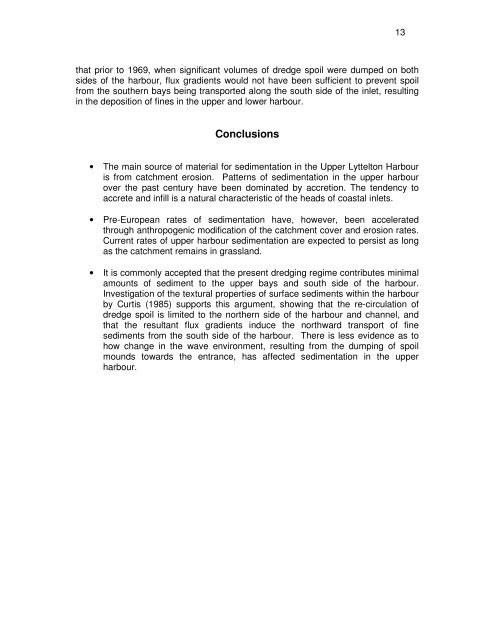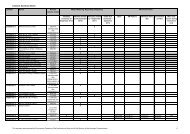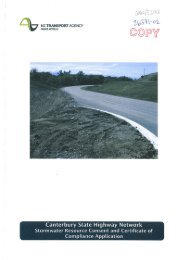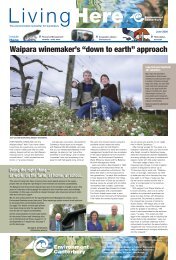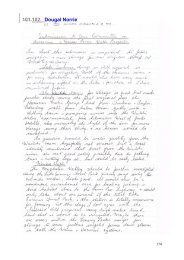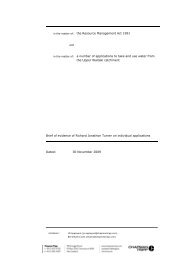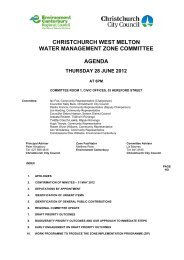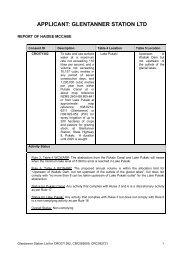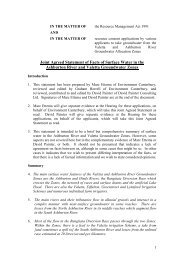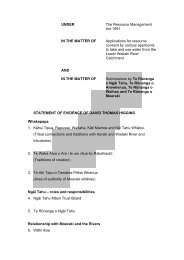Sedimentation in the Upper Lyttelton Harbour - Environment ...
Sedimentation in the Upper Lyttelton Harbour - Environment ...
Sedimentation in the Upper Lyttelton Harbour - Environment ...
You also want an ePaper? Increase the reach of your titles
YUMPU automatically turns print PDFs into web optimized ePapers that Google loves.
that prior to 1969, when significant volumes of dredge spoil were dumped on both<br />
sides of <strong>the</strong> harbour, flux gradients would not have been sufficient to prevent spoil<br />
from <strong>the</strong> sou<strong>the</strong>rn bays be<strong>in</strong>g transported along <strong>the</strong> south side of <strong>the</strong> <strong>in</strong>let, result<strong>in</strong>g<br />
<strong>in</strong> <strong>the</strong> deposition of f<strong>in</strong>es <strong>in</strong> <strong>the</strong> upper and lower harbour.<br />
Conclusions<br />
• The ma<strong>in</strong> source of material for sedimentation <strong>in</strong> <strong>the</strong> <strong>Upper</strong> <strong>Lyttelton</strong> <strong>Harbour</strong><br />
is from catchment erosion. Patterns of sedimentation <strong>in</strong> <strong>the</strong> upper harbour<br />
over <strong>the</strong> past century have been dom<strong>in</strong>ated by accretion. The tendency to<br />
accrete and <strong>in</strong>fill is a natural characteristic of <strong>the</strong> heads of coastal <strong>in</strong>lets.<br />
• Pre-European rates of sedimentation have, however, been accelerated<br />
through anthropogenic modification of <strong>the</strong> catchment cover and erosion rates.<br />
Current rates of upper harbour sedimentation are expected to persist as long<br />
as <strong>the</strong> catchment rema<strong>in</strong>s <strong>in</strong> grassland.<br />
• It is commonly accepted that <strong>the</strong> present dredg<strong>in</strong>g regime contributes m<strong>in</strong>imal<br />
amounts of sediment to <strong>the</strong> upper bays and south side of <strong>the</strong> harbour.<br />
Investigation of <strong>the</strong> textural properties of surface sediments with<strong>in</strong> <strong>the</strong> harbour<br />
by Curtis (1985) supports this argument, show<strong>in</strong>g that <strong>the</strong> re-circulation of<br />
dredge spoil is limited to <strong>the</strong> nor<strong>the</strong>rn side of <strong>the</strong> harbour and channel, and<br />
that <strong>the</strong> resultant flux gradients <strong>in</strong>duce <strong>the</strong> northward transport of f<strong>in</strong>e<br />
sediments from <strong>the</strong> south side of <strong>the</strong> harbour. There is less evidence as to<br />
how change <strong>in</strong> <strong>the</strong> wave environment, result<strong>in</strong>g from <strong>the</strong> dump<strong>in</strong>g of spoil<br />
mounds towards <strong>the</strong> entrance, has affected sedimentation <strong>in</strong> <strong>the</strong> upper<br />
harbour.<br />
13


